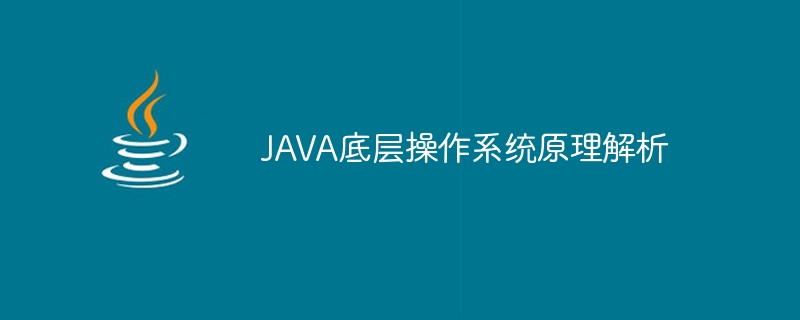

As a high-level programming language, Java makes it easier for programmers to develop and can be used across platforms. However, the bottom layer of Java runs directly on the operating system, so it is very important to understand the principles of the operating system when programming Java.
The underlying operating system principles of Java need to be understood mainly as follows:
Java runs in the memory of the operating system In the space, you need to use the memory management function provided by the operating system. The memory of the operating system is divided into physical memory and virtual memory. Physical memory refers to the actual memory capacity of the computer, while virtual memory is a virtual memory provided by the operating system on the basis of physical memory.
Java’s memory management mainly includes heap memory and stack memory. Heap memory is the space for storing objects in the Java virtual machine. Its size can be set by modifying the parameters when starting the Java virtual machine. Stack memory stores the call stack when the thread is executed, and its size can be adjusted.
Code example:
//Modify the heap memory size
java -Xmx1024m HelloWorld
//Modify the stack memory size
java -Xss512k HelloWorld
Threads in Java need to be implemented through threads of the operating system, and each thread needs to occupy certain memory resources. The thread scheduling algorithm of the operating system can affect the execution efficiency of threads and the stability of the system.
Threads are implemented in Java through the Thread class. In Java, using threads can improve the concurrency performance of the system. The optimization solution of thread scheduling algorithm can effectively improve the operating efficiency of system concurrency.
Code example:
//Create thread
Thread t = new Thread(() -> {
System.out.println("Hello World");});
//Start the thread
t.start();
The bottom layer of Java also needs to use the file system function provided by the operating system to Implement file reading and writing operations. The organization and management of the file system will also have an important impact on the efficiency and reliability of Java programmers reading and writing files.
In Java, file reading and writing operations are implemented through the File class. In Java, the File class can access local file systems and network file systems, and supports the management of file system access rights, realizing control of file system resources.
Code example:
//Read file
File file = new File("test.txt");
BufferedReader reader = new BufferedReader(new FileReader(file) );
String line = reader.readLine();
while (line != null) {
System.out.println(line); line = reader.readLine();
}
reader.close();
// Write file
File file = new File("test.txt");
BufferedWriter writer = new BufferedWriter(new FileWriter(file));
writer.write("Hello World");
writer.newLine();
writer.close();
In short, understanding the principles of Java's underlying operating system is very important for Java programmers. Only by mastering these underlying principles can we better write high-quality Java code. We need to learn the basic principles of the operating system and understand important operating system knowledge in Internet development such as underlying memory management, thread scheduling, and file systems.
The above is the detailed content of Analysis of JAVA underlying operating system principles. For more information, please follow other related articles on the PHP Chinese website!
